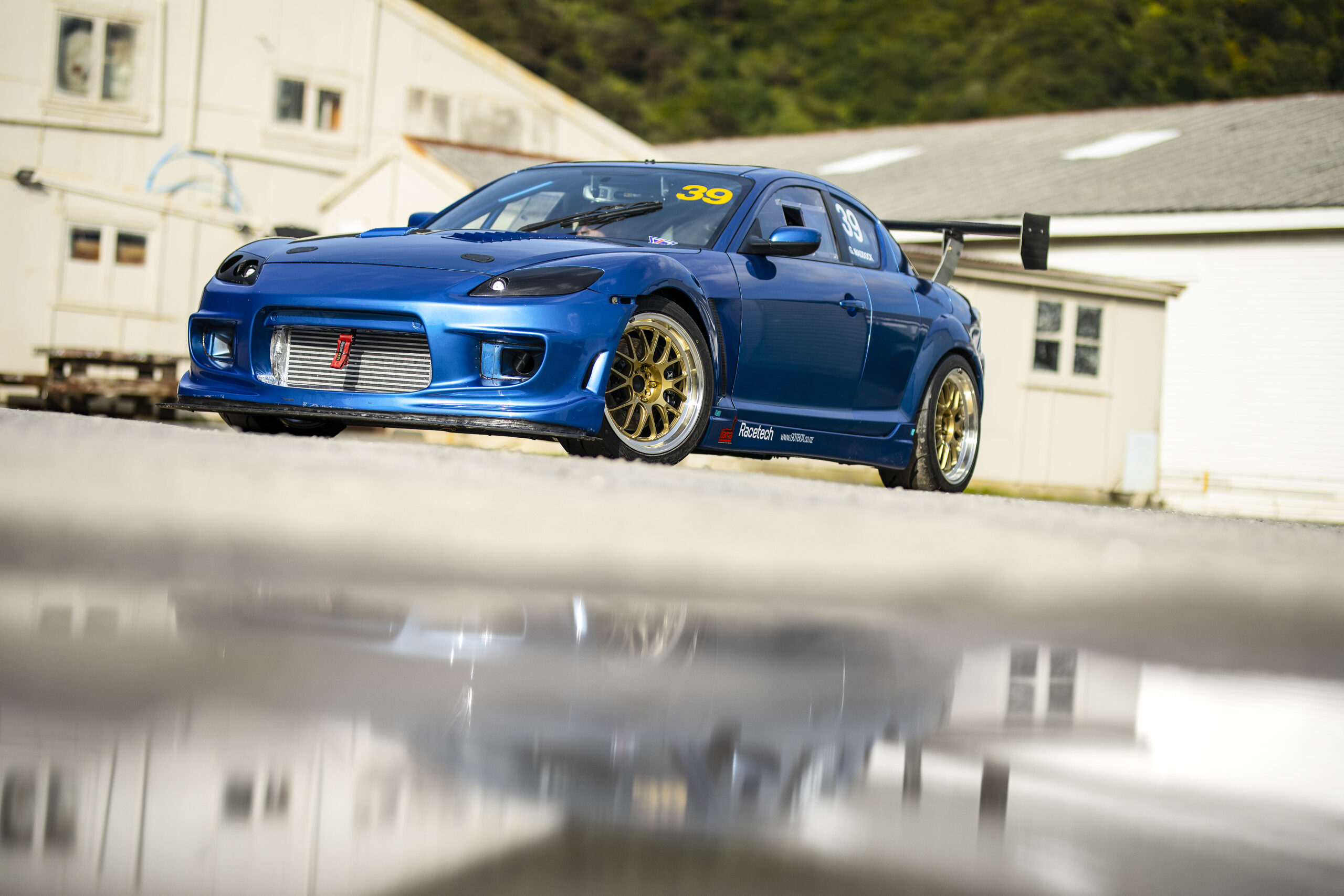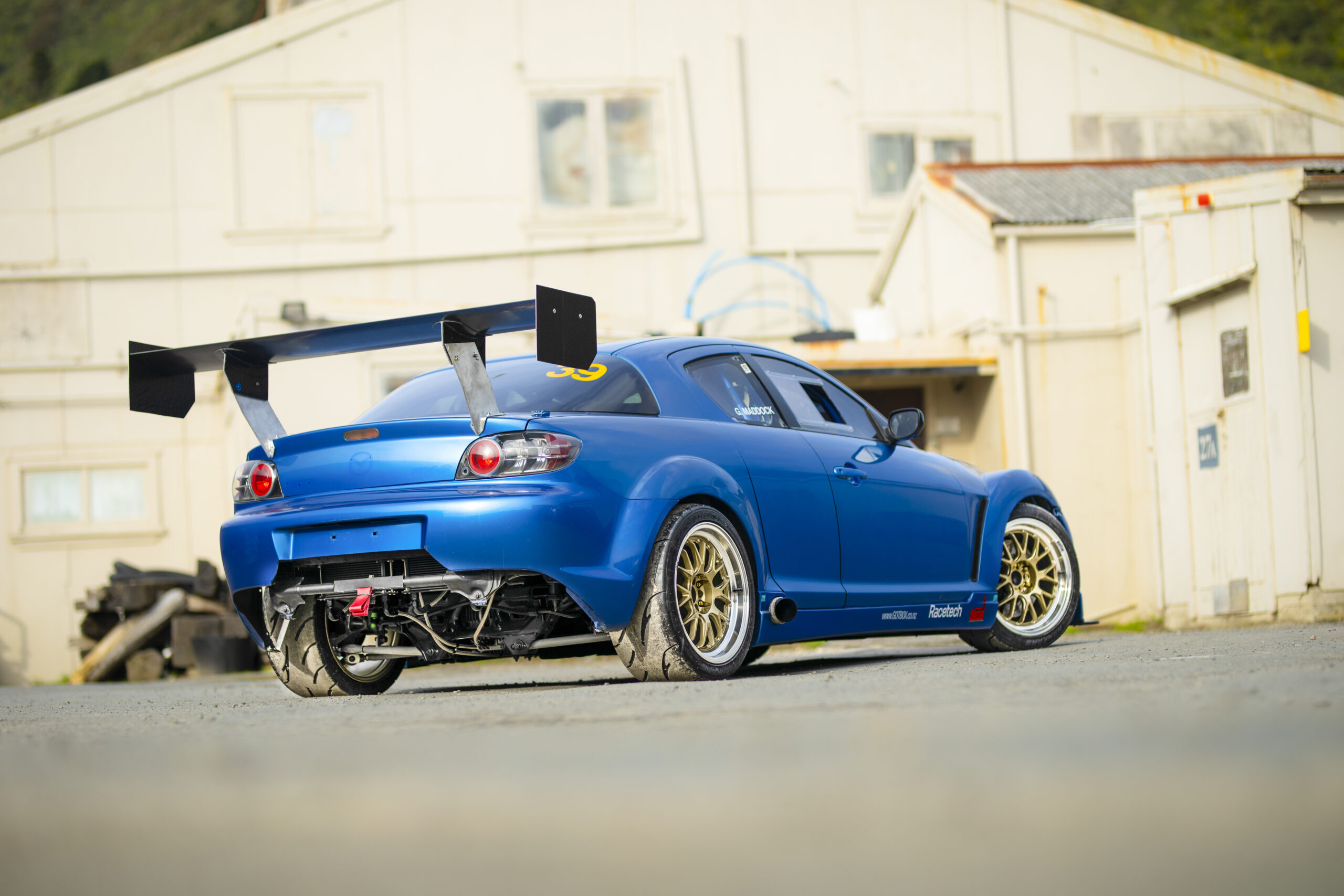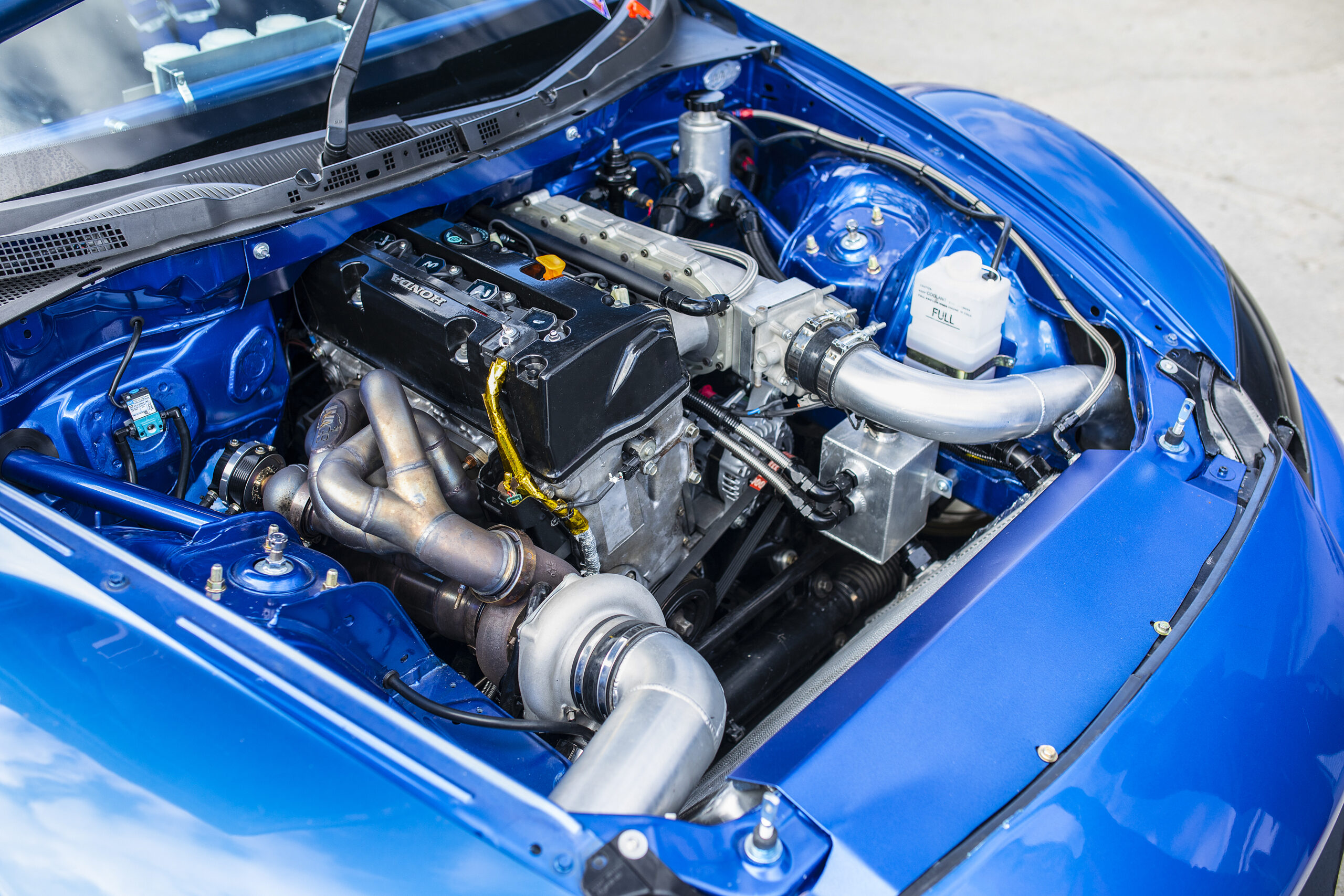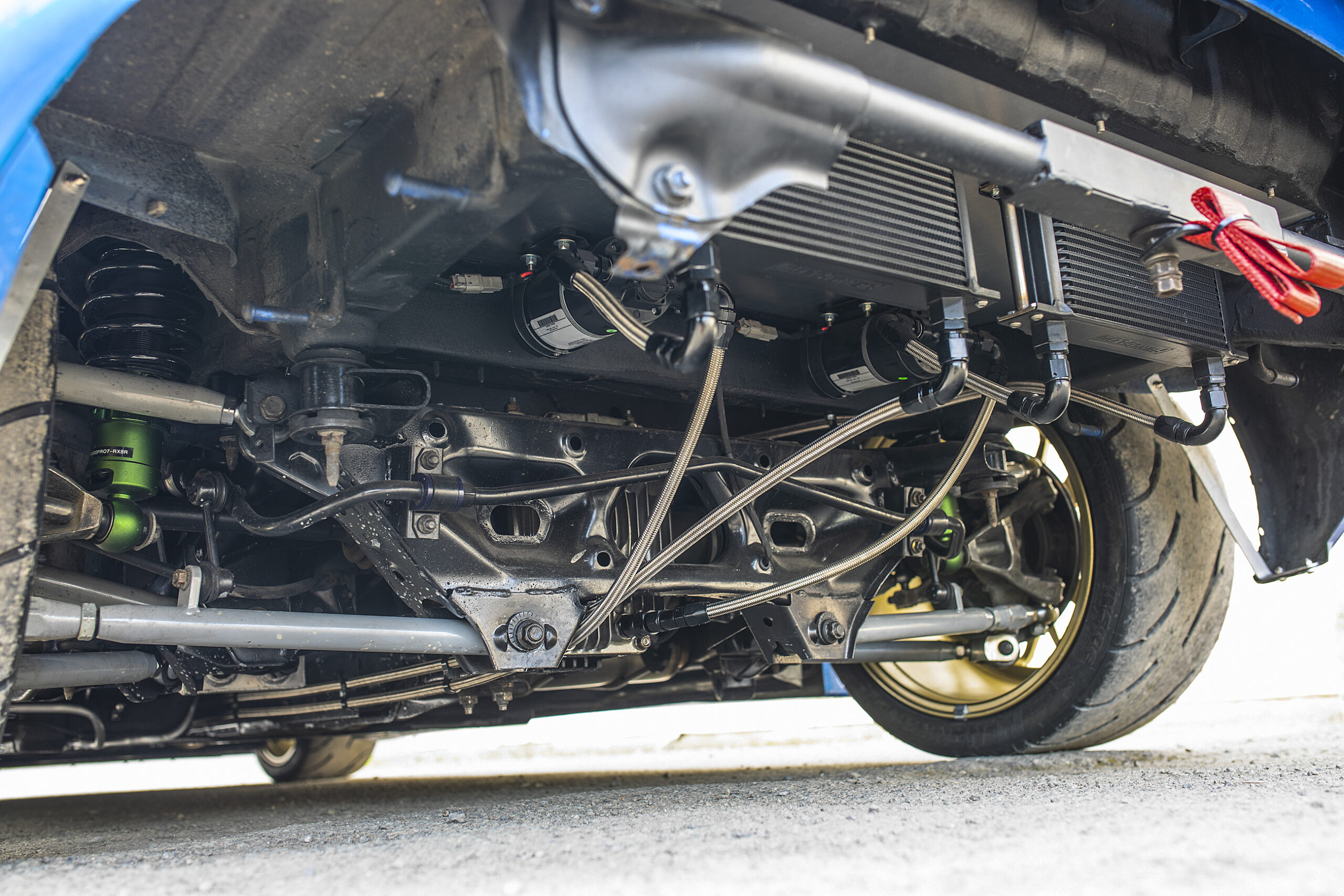Words and Photos: Richard Opie
‘Ideal’ isn’t an attribute most folk chuck around in the general direction of the Mazda RX-8.
Sure, the ‘Is it a coupe, is it a sedan’ styling definitely polarises opinion, especially given its follow-up status to the quite simply sublime form of the FD RX-7.
Then there’s the dynamics of the chassis, lauded by the motoring press of the time for its stiffness and driver communication, which makes the questionable aesthetic insignificant — from behind the wheel, at least. Any chance of attaining a Meatloaf-certified “two out of three” score is then dashed by the presence of the much-maligned — many would say unfairly — Renesis 13B that the SE3P RX-8 packed from the moment it rolled off the Hiroshima production line. The Renesis lacked the sucker-punch torque of the dearly missed 13B-REW turbo, and, furthermore, would go on to develop well-publicised reliability issues. Just plug ‘Renesis engine problems’ into your favourite search engine to be bombarded by a cascade of disenchanted forum users.
But what if the Mazda RX-8 does lend itself to your ideal? That’s exactly how Gary Maddock ended up with this streak of ‘quad coupe’ blue lightning — a track weapon purpose built with the sole intent of scratching that particular itch.
It all started with a simple question, asked some 20-odd years before the RX-8 would materialise.
“One of my wife’s cousins asked me this question one night,” explains Gary. “He was a savvy businessman and we were talking about my racing. He just asked: ‘What would be your ideal race car?’”
Of course, Gary had an answer, and, while it may not have been an RX-8 specifically, there was a set of criteria in mind.
By this stage, Gary had spent a bit of time dancing from apex to apex, at the helm of a variety of vehicles. As a teen, he first got grease under his nails involuntarily, climbing under the bonnet of his old Hillman Hunter to fix a blown head gasket — something the Hunters all seemed to do. He progressed to skinned knuckles in the pursuit of speed in some slightly more suitable machinery. A Mark 1 Escort packing the venerable Pinto two-litre, and an HC Vauxhall Viva with a hot 2300cc engine, built in just a week, satiated Gary’s need for speed and introduced him to club motorsport, including hill climbs, autocross, bent sprints — you name it.
Being a lower North Island local, proximity to Manfeild would soon see the development of a thirst for running door to door with other cars.
“They ran these six-car sprints,” Gary explains, “and the moment I left the start line with five other cars I was hooked; there’s nothing quite the same as running alongside a bunch of other guys.
“So I ended up buying this Civic EK9 road car. It had 200k on it and it had all these Mugen bits on it. I threw it all away back then and stripped it to go racing.”
Caged, with upgraded brakes and shocks, the EK9 fitted the bill. Gary’s first meeting was a national-level event at Pukekohe.
He recalls, “It did my head in but I absolutely loved it! I was always in the lower third of the grid, but there was always someone to race, and in a reverse grid there was always someone coming at ya!”
The need for speed is a cruel addiction, and after two seasons Gary upgraded to the infamous ‘silver bullet’ DC2, a Speedfactor-liveried weapon packing a serious B20 VTEC engine, and initially campaigned by Justin Herbert. An evasive manoeuvre thanks to a spinning competitor would see Gary putting it into the front straight wall at Manfeild, leaving the car written off and a search for a new chassis.
“I bought the RacePro Starlet as a rolling shell off Phil Brown and resurrected the B20 from the silver bullet, and off I went racing again,” recounts Gary, “but eventually I got bored — well, I actually needed to spend some money on the chassis and improve the handling, but chose not to and sold it all up and played with a few road cars, including a supercharged EP3 Civic.”
As Gary learned, the itch never subsides. While a mild Alfa Romeo 147 “sort of” scratched it, ultimately it wasn’t fast enough so, again, Gary threw it all away and had a think about what he wanted to build.
That 20-year old question flashed through Gary’s mind, and a recipe began to form, the genesis for what would be.
“I wanted a rear-wheel drive, roughly 225kW per tonne, able to do a 1:15 on a good day at Manfeild, so that’s what I built.”
Also key was a reasonably unstressed car.
Everything kicked off when a still-born RX-8 K24-swap project, started by Adam at Speed Science, began to pop up around Facebook, eventually coming up for sale.
“I thought that might be entertaining, so I talked to Adam and got the car delivered to me,” Gary says.
Now, ordinarily, the RX-8, equipped with the Renesis, probably wouldn’t quite meet the brief for unstressed, reliable, and fast, but the car arrived with a K24 Honda engine literally stropped into place. Not only a choice in the pursuit of function, but also a case of sticking to his Honda roots — a badge Gary’s clearly grown fond of over his racing years. First stop, then, was ST Automotive’s Shane Parsons, who set to work piecing together a stout K24 long block for the project.
By Gary’s own admission, it’s not super exotic, with billet rods and forged 9:1 compression pistons atop a stock crank providing a rock-solid foundation for the boost to come. Up top, the head is simply a US-spec Acura TSX unit in bog-standard configuration, just refreshed in the interest of reliability. As Gary says, the Honda K-series cars have a reputation for flowing so well in stock form that in a boosted application, chasing the sort of power he was after, they didn’t really require extensive porting or wild cams.
“The motor was just sitting in the hole. Some of the firewall had been cut out, but it was far from really being mounted up,” he explains.
The first challenge was finding someone to do it.
“I had a goal; I bought the car in February and wanted to drive it by Christmas, so I talked to Marc at Llama Engineering. He’d built a car for me in the past so knew I was good for it and off we went.”
A kitset cage from Racecraft Engineering was stitched into place, and the supplied engine-mount kit was completely remanufactured. The firewall was chopped even further, so the engine could be moved back — although not as far back as the Llama boys initially wanted — and the cross member was totally re-engineered to sit the K24 suitably low.
A RaceFab suspension arm kit, consisting of adjustable, rose-jointed arms on all four corners, supports a set of Fortune Auto 500 series coilovers, completing a simple but effective and tunable chassis arrangement.
With Llama’s job done, the RX-8 was ferried off to Wellington Automotive Gearbox Specialists (WAGS) for the ‘techo’ bits and pieces — all that critical systems work that was needed to get an engine swap running.
“James, who was working at Llama, switched over to WAGS around the time the car went to WAGS, so he saw the whole project through, really. He built the turbo manifold, the pipework, mounted the intercooler — he really stitched it all together. He was even the guy who decided to make the engine bay look pretty,” Gary grins.
WAGS also supplied the Aeroflow 6762 turbo, a unit usually reserved for larger power plants but, due to the prodigious air flow of the K24, deemed suitable — and it works, according to Gary, with a linear power delivery, building to a banshee shriek at the pointy end of the tacho.
The car emerged from WAGS with “all the small stuff that makes a race car”; the hydraulics and fuelling and braking systems all readied for battle in the Wellington workshop. The team even pieced together the PAR dog gear set for the RX-8 five-speed box, selected due to its increased strength over the six-speed option, ratios not a problem with the expected spread of turbo torque.
A sparky by trade, Gary had a crack at wiring the engine and installing the MaxxECU management. With guidance from Geoff at NZ Wiring, and the steady tuning hand of Chris at Prestige Motorsport, the RX-8 fired into life before Gary’s goal time, and he even got some seat time in at a sprint before Christmas 2021.
Initial runs were promising, with just a few heat issues, so the RX-8 is well equipped with coolers for pretty much anything you care to name, in the interest of keeping things unstressed and reliable. Gary even reckons it’s got it in it to run a one-hour endurance race; with a low-boost power level of 285kW and a high-boost number of 375kW, the RX-8 would no doubt be a potent contender.
Thus far, though, Gary has focused on getting seat time, testing and ironing out issues before getting the RX-8 on the grid and amongst the fray.
“It feels planted; the brakes are coming right with some development, and it’s got heaps of power. It’s going to be really fun,” smiles Gary. “We’re nearly at the point where it’s just a case of sorting out the driver!”
As the answer to a question that’s a couple of decades old, you’ve gotta admit it’s a pretty solid solution. The inherent rigidity of the RX-8 shell, coupled with the punch and reliability of Honda’s K-series hero, should see Gary right until he hangs up the helmet for good — he admits it’s very likely to be his last race car. A hell of a way — an ideal way, even — to see out a long tenure of tarmac thrashing.
_________________________________________________________________________________________________
This article originally appeared in New Zealand Performance Car issue 299



















